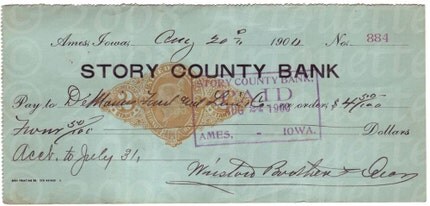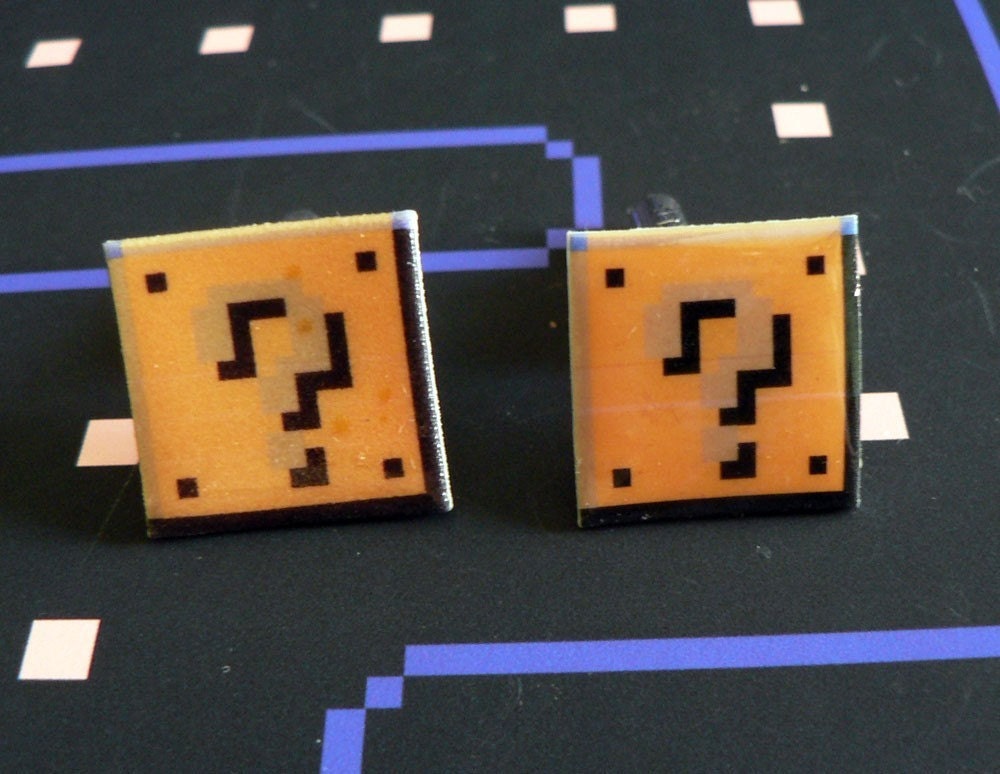I've written about pricing before. I will probably write about it again. I was an economics major at Oberlin College for three years (my "taking time off" for a variety of reasons became permanent, but that's another story), so I do actually know what I'm talking about.
This is the unbelievably simplified version of how to price the things you sell. I should charge you for it, but I'm not, so go buy crap from my shop instead.
If you already made it and it is sitting around and there is only one like it (usually paintings, sculpture, some jewelry, and anything else that is already done and you can't or won't be making more similar to it based on its sale) then you want to choose your price based on the most you think someone will pay in an amount of time you're willing to wait to get paid.
That's it. I don't care how much your materials cost or how much time it took or any of that. The thing is already made. You already spent that money and time. It's gone. "Sunk" as they say in Econoland. Now it's just a matter of how long it will sit on your shelf. Are you willing to wait a longer amount of time in hopes that someone will pay a higher price? Or do you price it lower so it sells faster? Your choice. But remember: 1) however much it finally sells for is more than the $0 it is currently making you and 2) unless you are selling milk and eggs, not everybody will want your item at any price, no matter how low. There may be someone out there who really wants and is willing to pay a higher price for your whatever, but if she never knows it exists, putting it on sale a dozen times for the wrong audience won't do you any good.

If you already made it but you will make more based on the sale of this one or if you only make it after it sells or if you adjust how much you make based on how much you sell in any way, shape or form, pricing is a bit harder. You're actually looking for the point where supply meets demand. I'm not going into how to collect extensive pricing data right now, even though that's the real way to figure this out. You need to know if you charge $20 and you sell 5, how many would you sell by charging $15? If you sell 6 at $15, you may think "great, I sold one more!" but it's not great because you make $100 selling 5 at $20 (5 x 20 = 100) and only $90 selling 6 at $15 (6 x 15 = 90).
 Can you still sell 5 at $23? $25? When do people buy less based on price? Data data data. And even that is hard to know for sure since there are so many other things going on, like how much you're advertising and holidays and the economy and and and!!
Can you still sell 5 at $23? $25? When do people buy less based on price? Data data data. And even that is hard to know for sure since there are so many other things going on, like how much you're advertising and holidays and the economy and and and!!So! Here's the easy version for you: figure out how much each item costs you to make. I always like to figure in a little extra to account for my many mess-ups along the way, since they are a part of the cost of making my cards. Then figure how much time it takes you to make each thing. Give yourself a minimum wage (your particular government's, a "living wage," or sweatshop labor rates are all good places to start). Add those two numbers together. Now don't charge less than that. That's what it's worth to you to make more.
EVERYBODY: Look at what other people with similarish items charge. Look at how many sales they have and when. Look at what they're selling.
 Just because somebody is charging a lot for something in your category doesn't mean anybody is buying at that price. It can be scary to see the people at the ends of the pricing spectrum, but look at their sales numbers. How many more sales are the people at the bottom getting than the people in the middle? If it's not a lot, then the people in the middle are probably making more money. If the people at the bottom are selling two or three times more than the people in the middle, then maybe you should be pricing at the bottom, since you'll most likely make more money total. If the people at the top of the spectrum aren't selling anything, then it's not worth it to price at the top of the spectrum. But if the people at the top are selling regularly, it might be worth it to price towards the top because your sales will still move and that may be a lovely place for supply to meet demand.
Just because somebody is charging a lot for something in your category doesn't mean anybody is buying at that price. It can be scary to see the people at the ends of the pricing spectrum, but look at their sales numbers. How many more sales are the people at the bottom getting than the people in the middle? If it's not a lot, then the people in the middle are probably making more money. If the people at the bottom are selling two or three times more than the people in the middle, then maybe you should be pricing at the bottom, since you'll most likely make more money total. If the people at the top of the spectrum aren't selling anything, then it's not worth it to price at the top of the spectrum. But if the people at the top are selling regularly, it might be worth it to price towards the top because your sales will still move and that may be a lovely place for supply to meet demand.Now go! Price things! And buy my business card sized "thank you" notes to include in all the wonderful items you are about to sell (I have tons more not listed, so please convo me if you're interested)
photos (all items for sale on Etsy):
Original Mixed Media Artworks by TwoHiddenHeads
1900 Story County Bank of Ames, Iowa, Check from Artouette
a paradox - super mario question block cufflinks by pixelparty
Money Bags Pinback Button, Badge by catlover1

1 comment:
I just arrived from the etsy forum about pricing. I like this practical point of view and your humour. thanks for the suggestions!
Post a Comment